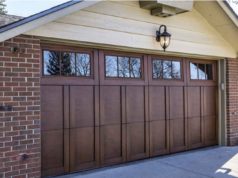Durbin Calls On HUD To Strengthen Regulations Addressing Childhood Lead Exposure
The Chicago Tribune Found That Since 2012, At Least 178 Chicago Children Living In Federally Subsidized Housing Reported Dangerously Elevated Blood Lead Levels
CHICAGO, IL – February 1, 2015 – (RealEstateRama) — Following a Chicago Tribune report that highlighted numerous incidents of childhood lead poisoning in Chicago, Illinois, U.S. Senator Dick Durbin (D-IL) wrote Secretary of Housing and Urban Development Julián Castro to urge the Department to conduct a thorough review of its regulations of acceptable lead exposure levels for children living in federally subsidized housing.
“In Flint, Michigan, where there is currently a lead-tainted water crisis, lead exposure is exacerbated among this population, compounding racial and socioeconomic inequalities in health, housing, and opportunities. High blood lead levels in children poses an increased risk for intellectual, behavioral, and academic impairment further perpetuating cycles of poverty, violence, and inequality, and contributing to delays in social and cognitive development. These impairments are irreversible. Therefore, the risks cannot and should not be ignored,” Durbin wrote.
“I urge the Department to carefully review its current regulations and risk assessment processes and protocols to ensure that they adequately protect children from lead exposure in Section 8 housing and other federally subsidized housing. I also urge the Department to identify concrete steps to achieve parity with the CDC blood lead level standards.”
The Chicago Tribune’s article, Federal Housing Policy Leaves Poor Kids at Risk of Lead Poisoning, exposed a critical disparity between the lead-based paint standard for public housing, Section 8, and other federally subsidized housing and levels recommended by the Centers for Disease Control and Prevention (CDC). Under current Department regulations, the lead-based paint standard for public housing, Section 8, and other federally subsidized housing is four times the CDC-recommended level.
The full text of the letter is below.
The Honorable Julián Castro
Secretary
Department of Housing and Urban Development
451 7th Street S.W.
Washington, DC 20410
Dear Secretary Castro:
A recent Chicago Tribune article, Federal Housing Policy Leaves Poor Kids at Risk of Lead Poisoning, highlighted numerous incidents of childhood lead poisoning in Chicago, Illinois, stemming from exposure to lead-based paint in homes eligible for the Department of Housing and Urban Development’s Section 8 housing program. This raises serious concerns about access to safe, affordable housing for families and children. I urge the Department to conduct a thorough review of its regulations of acceptable lead exposure levels for children living in federally subsidized housing.
In one instance, nine children in a single family were found to have elevated blood lead levels, including a 4-year-old whose blood lead level was 11 micrograms per deciliter (µg/dL)—more than double the blood lead level for children at which the Centers for Disease Control and Prevention (CDC) recommends initiating public health interventions, but below the environment intervention limit set by the Department. Sadly, this is not an isolated incident. Since 2012, at least 178 other young children in Section 8 homes in Chicago reportedly have experienced this same fate.
While the CDC states that there is no safe blood lead level in children, its current recommended blood lead level threshold is 5 µg/dL, revised down from 60 µg/dL in 1960 and from 25 µg/dL in 1990. Today, however, approximately 24 million homes in the U.S. have lead-based paint hazards, with young children living in roughly 4 million such homes. Of these, an estimated 535,000 children in the United States have blood lead levels greater than or equal to 5 µg/dL, and 150,000 children have blood lead levels greater than or equal to 10 µg/dL.
This problem is more pronounced for young children in urban, low-income and minority communities because they are more likely to live in older homes that were built before lead-based paint was banned in 1978. In Flint, Michigan, where there is currently a lead-tainted water crisis, lead exposure is exacerbated among this population, compounding racial and socioeconomic inequalities in health, housing, and opportunities. As studies have shown, low-income and minority children bear the disproportionate burden of this disease. High blood lead levels in children poses an increased risk for intellectual, behavioral, and academic impairment further perpetuating cycles of poverty, violence, and inequality, and contributing to delays in social and cognitive development. These impairments are irreversible. Therefore, the risks cannot and should not be ignored.
Under current Department regulations, the lead-based paint standard for public housing, Section 8, and other federally subsidized housing is 20 µg/dL—four times the CDC-recommended level. I am concerned that the Department’s regulations fail to align with current CDC standards, which reflect the best and most recent scientific evidence available. Instead, the Department’s standards seem to reflect the CDC’s lead level standards from decades ago. I also am concerned that the processes and protocols for identifying and remediating lead-based paint are ineffective in ensuring safe, affordable housing for families and children.
I urge the Department to carefully review its current regulations and risk assessment processes and protocols to ensure that they adequately protect children from lead exposure in Section 8 housing and other federally subsidized housing. I also urge the Department to identify concrete steps to achieve parity with the CDC blood lead level standards.
Thank you for your consideration of this request.






